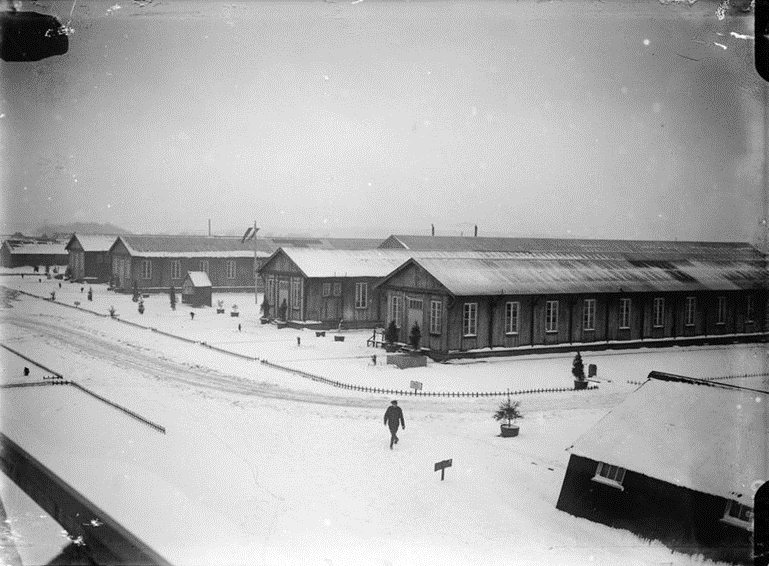ALBERT BASSETT
Sapper, 537927, 350th Engineering and Mining Company, The Royal Engineers
Died from bronchial pneumonia on 6 February 1919 at No.12 Stationary Hospital, St. Pol-Sur-Ternoise, France. He was aged 31
Buried in St. Pol British Cemetery: Grave II.E.9

St. Pol British Cemetery
(Click to enlarge)
Sapper Albert Bassett was born in Hartfield in 1879. He enlisted on 19 August 1914 at Hastings, Sussex. He was serving with the 350th Engineering and Mining Company, The Royal Engineers, when he died from bronchial pneumonia, on 6 February 1919, at No.12 Stationary Hospital, St. Pol-Sur-Ternoise, France.
He was the son of William, born 1847 in Withyham, and Harriet Bassett (née Baldwin), born 1848 in Hartfield. His father was an agricultural labourer. In 1881 Albert was living at Orchard Cottage in Hartfield with his parents and siblings William, Emma and Albert. Their given places of birth suggest that this family moved around as their father searched for work as an agricultural labourer. By 1891 the family was at Cotchford Cottage, Hartfield, and there were three further, younger siblings. In 1901 Albert was a labourer working on the roads and a boarder with the Payne family in Hartfield.
In the 1911 census Albert was listed as a single gardener, aged 30, and he was a boarder with the Divall family at Worth Tyes, Cabbagestalk Cottage, Hartfield. When he enlisted in 1914 he was recorded as a labourer and he had previously been rejected as "not tall enough".
Albert married Ellen Harriet Berry in the Uckfield district in 1918. She subsequently married a Mr Marden in March 1921 and moved to Hatch End, Middlesex.
Albert originally served with the 5th Royal Sussex Regiment, service number 2259, and transferred to the Royal Engineers on 22 June 1917. His Medal Roll records that he first arrived in France on 11 July 1915.
The Royal Engineers (RE) maintained the railways, roads, water supply, bridges and transport — allowing supplies to the armies. They operated the railways and inland waterways, maintained wireless, telephones and other signalling equipment, making sure communications existed. The Royal Engineers grew into a large and complex organisation. By 1 August 1914 the RE consisted of 1,056 officers and 10,394 men of the regular army and Special Reserve, plus another 513 and 13,127 respectively serving with the RE of the Territorial Force. Before the Second World War, Royal Engineers recruits were required to be at least 5 feet 4 inches tall (5 feet 2 inches for the Mounted Branch). They initially enlisted for six years with the colours and a further six years with the reserve or four years and eight years. Unlike most corps and regiments, in which the upper age limit was 25, men could enlist in the Royal Engineers up to 30 years of age. They trained at the Royal Engineers depot in Chatham or the RE Mounted Depot at Aldershot.

No.12 Stationary Hospital in Winter 1917
(Click to enlarge)
St. Pol-sur-Ternoise, where Albert Bassett died, was a military administrative centre during the whole of the First World War and was taken over by Commonwealth troops from the French in March 1916. No.12 Stationary Hospital was posted on the race-course near the town from 1 June 1916 to 1 June 1919. St. Pol British Cemetery was begun in March 1918, when the extension to the communal cemetery was almost full; the last burial was made in July 1920. St. Pol British Cemetery contains 258 Commonwealth burials of the First World War.

Albert Bassett's entry on the Graves Registration
Report Form for St. Pol British Cemetery
(Click to enlarge)
Albert's elder brother, James Baldwin Bassett, was killed at the Battle of Loos on 8 October 1915, aged about 38.
Listed on the War Memorial in Hartfield.
Carol O'Driscoll
16 May 2018

